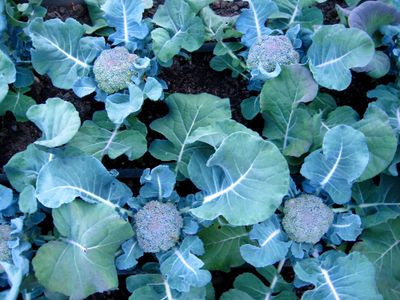From garden to table
Most vegetables are doing well, but cool, wet spring killed the shallots

It’s time for another monthly update on what’s happening out in the garden. Thanks to the warmer temperatures, all of the veggie plants – as well as the weeds – have been working overtime to get back on track after our chilly spring. Let’s talk about the successes first.
This is the first year we’ve grown Munchkin broccoli. Last month I reported finding cabbage loopers on some of the leaves. Once I hand-picked the leaves that had worms, the plants grew well and we have been eating fresh broccoli for the past couple of weeks. To harvest broccoli, carefully cut off the primary head without damaging the smaller secondary heads below it. They then will start growing and can be harvested later. I’m pleased with this variety because the plants are very petite, and are easier to grow under a floating row cover than the standard varieties.
We have harvested scallions, lettuce and Swiss chard on a regular basis. The tomato plants are finally starting to go through some growth spurts, and there are even a few small tomatoes developing on them. There are a lot of pods growing on the Jacob’s Cattle beans. This is the first year I’ve grown a shelling bean, so I’m learning as I go. I’ll let them grow through the season and harvest them when the shells start to shrivel.
The Italian pole beans have crawled their way up the bean tower to a height of more than 6 feet and are blooming. Once they and our bush beans start producing, it will be important to pick them regularly. This way, the plant will continue to produce more beans, rather than putting all of its energy into maturing the seeds in the older beans. If you have more beans than you can eat, the easiest way to preserve the harvest is to blanch them. Submerge them in a pot of boiling water for two minutes, then plunge them into cold water. Drain the beans, place them in freezer bags and pop them into the freezer. You’ll appreciate the effort when your dinners include homegrown beans this winter.
Our cantaloupe vines are finally taking off and are starting to bloom. I’m going to let the vines grow as much as they want until each plant has a couple of developing melons on them. Then I’ll start pinching back the tips of the vines to force the plants to focus their energy on growing the melons. With a little luck, they’ll be ready well before frost.
Let’s look at the things that haven’t gone so well.
Even though the cantaloupes are growing well now, some of them and some of our cucumber seedlings got frosted on June 10, a month after we usually have our last frost. I’ve replanted them and am hoping there’s still enough time to get a harvest from them, but at least the surviving melons and cukes are looking good.
For the first time ever, not a single shallot bulb has sprouted. I believe the cool, damp weather is what caused them to rot in the ground. The onions and garlic have been growing well so I’m not sure why the shallots were the only ones affected.
This has been a challenging year for gardeners. If you’re feeling frustrated, hang in there and appreciate the produce your garden gives you. We are usually blessed with wonderful weather for growing vegetables. Besides, it’s still early, and we just might just pull this off yet.